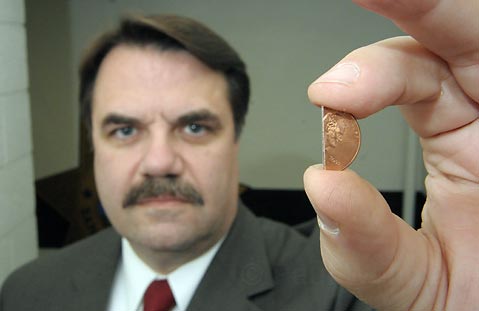Sheriff Pushes for New North County Jail
Half-Cent Sales Tax Would Help Fund $80 Million Facility

Santa Barbara County is perhaps as close as it’s ever been to getting a new jail in North County. The state has committed $56.3 million — 70 percent of the cost — through Assembly Bill 900 to build the new facility. Because of the recession, construction costs are at an all-time low. And the county already owns land on which to build the new jail.
But while Sheriff Bill Brown has come closer to getting a new jail built than any other sheriff since the 1980s, when a superior court judge first ordered a jail population capacity limit because of overcrowding issues (the jail is frequently at 125-percent capacity when it should be at 85 percent to allow for fluctuations), he still has plenty of hurdles. The jail would cost $15 million to $17 million a year to operate, and even with the generous deal with the state — which some officials are nervous won’t come through, given the state’s own fiscal woes — the county would still have to pony up the other 30 percent of the cost, $23.7 million. And the cost of this jail is significantly more expensive than the proposed facility that failed miserably in 2000 with voters, who turned down a ballot measure nearly two-to-one.
Brown presented a new ballot measure proposal of a one-half cent sales tax to the Board of Supervisors Tuesday that would need a two-thirds supermajority approval by county voters this November to pass, a tall order when a tax increase is involved. And if a January 2009 poll is any indication, Brown has his work cut out for him. In that poll, 45 percent of people said they definitely or probably would support a ballot measure to relieve jail overcrowding. After being presented with more details about the current state of jail overcrowding, including the information that many inmates are released because of overcrowding (1,500 to 1,800 a year, Brown said Tuesday), leading to potential public safety issues, that number jumped to 59 percent, with 9 percent of people saying they needed more information to make a decision. But, Brown said, “the time is now.”
His proposal Tuesday followed the recommendations of both a recent Grand Jury report and that of a Blue Ribbon Commission he convened early on in his term. (Brown was elected Sheriff in 2006.) Not only would a 10-year sales tax raise enough cash to build a new 304-bed jail, but it would also pay for annual operations. That size jail would only be feasible with the second part of the tax fund apportionment: funds for prevention, treatment, and alternative programs. A new jail facility on its own isn’t the answer, Brown said, and neither is prevention, but a combination of the two. “We can best serve the public if we can prevent crimes from happening in the first place or keep offenders from committing new crimes once they’re released from jail,” Brown said. At any one time, 38 percent of the jail’s population is admitted gang members, 18 percent is homeless people, and 80 to 85 percent have substance abuse problems. But with funding for programs like day reporting centers, work furlough, truancy, and vocational and educational training, a creative approach could keep people out of a recurring life of crime.
A third chunk of money would go toward enhanced law enforcement and fire protection services on the front lines, passed out to jurisdictions on a per capita basis.
While the supervisors were generally supportive of the need for a jail, as well as the prevention and treatment programs this measure would fund, a few expressed concern that the sheriff had brought this proposal to them so late. For it to make it on November’s ballot, the supervisors have to approve it by July 13, leaving them little time for tweaking. First District Supervisor Salud Carbajal said he’d like to see a little more of the money go to County Fire, while he and 3rd District Supervisor Doreen Farr suggested perhaps extending the measure out to 15 or 20 years to make sure everything was paid for.
But whatever is done, the board and Brown need to ensure the plan is something voters can get behind. Perhaps helping the cause is the anticipated sunset of a statewide one-percent sales tax set to expire when this tax would kick in July 2011. And as voters showed in 2008 with the approval of Measure A, a transportation sales tax, they are willing to step to the plate when a problem needs fixing, as most everyone can agree is the case here. But Brown will have to make his message compelling, and make sure everyone — from governmental jurisdictions to influential community groups — is behind the measure, to reach the 66-percent threshold.



